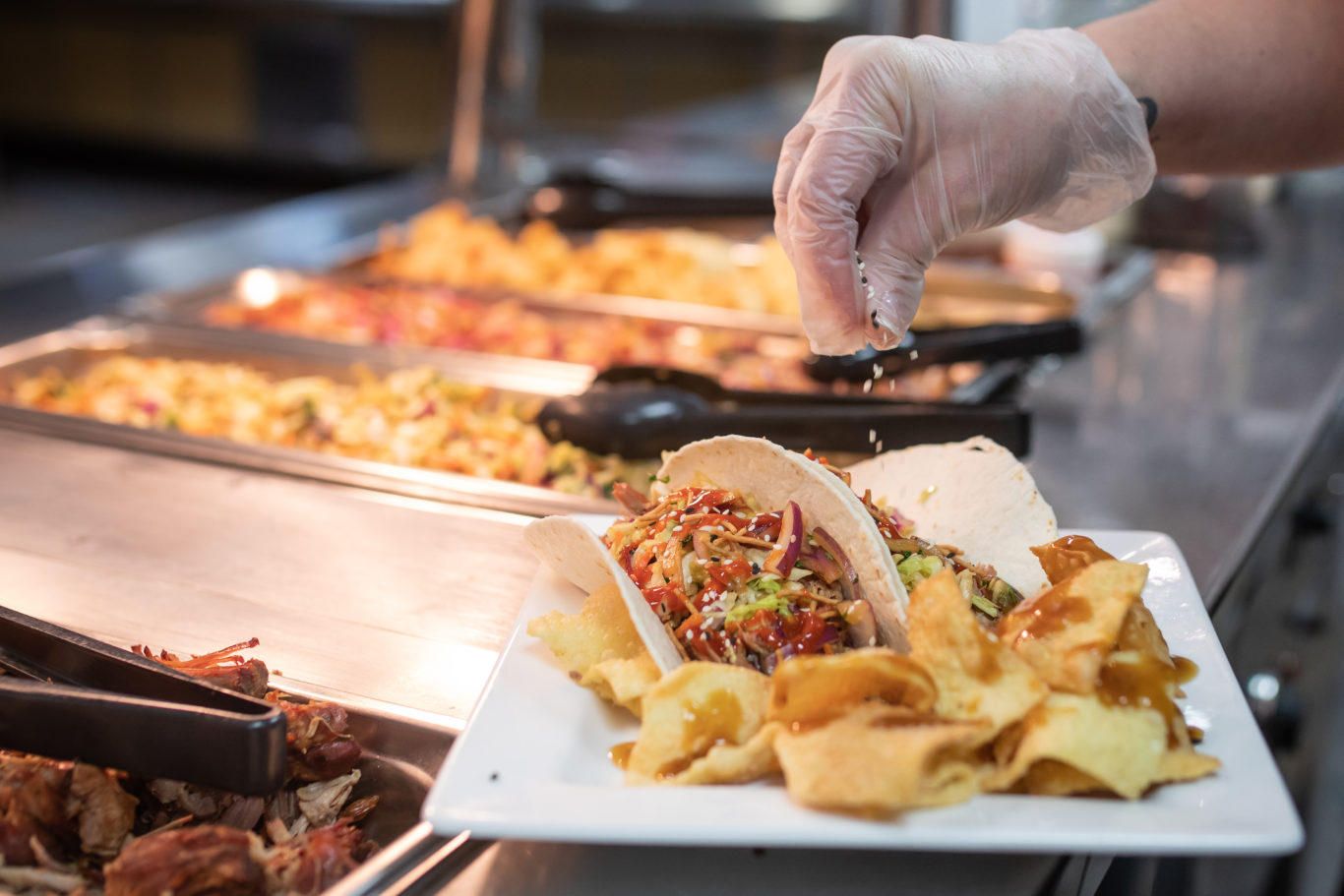Gen Z, the first generation entirely born after the advent of the internet, is officially entering college, graduating, and making their way into the workforce. When deciding where to attend college, much of their vetting process happens online, where they can access tuition costs, student reviews, dining hall pictures, and more.
When Gen Z students are evaluating a college or university, there are three main areas they look to, including financials (tuition, room & board, available scholarships), programming (available degrees, advanced degrees, special educational opportunities), and experiences (campus life, special events, and on-campus food).
Over the last 10 years, dining has shifted from a basic necessity on college campuses to a unique experience that can set a school apart. While it’s easy to look at hard numbers like food costs or labor costs when choosing your hospitality partner, many of the soft benefits of a good dining program are just as important. The overall experience students have on campus is part of what keeps them engaged and happy.
Here are 5 ways that an excellent university dining program can not only attract new students, but also help retain current ones.
1) Seamlessly meet student dietary needs
Vegan. Halal. Allergen-free. The ability for students to comfortably and safely eat on campus can play a major role in their opinion of the university as a whole. In a report released in 2018 by the International Food Information Council (IFIC) Foundation, 36% of Americans reported “following a specific eating pattern or diet within the last year,” like a vegetarian or gluten-free diet, with Gen Z and Millennials being more likely than previous generations.
Looking to boost on-campus meal plan participation?
click to Download our toolkit
We can help.

Just like students without food restrictions, individuals with special dietary needs want the right foods to be easily accessible. They don’t want to call attention to—for example—their inability to eat gluten. Providing specialty foods that are easy to find can make or break a student’s on-campus dining experience, which is why we offer allergen-sensitive areas like The Zone. Even students without dietary restrictions may feel drawn to the inclusive nature of a campus that prioritizes their friends’ needs.
2) Create unique dining experiences

There’s a lot that goes into creating a unique dining experience on campus, and it reaches beyond breakfast, lunch, and dinner—literally. Offering unique late-night dining, hosting special events, and opening an on-campus café all contribute to a more positive overall campus experience. Spontaneous food-related pop-up events are another way to keep students engaged.
As an example, on a particularly cold day, one of our university clients decided to host a pop-up event where they passed out hot chocolate, horchata, and sopapillas. Another time, they offered small bags of caramel corn to students walking around campus. A different client hosted a Louisiana seafood boil for students as well as an open-fire “paella by the lake” event as part of their “Chef’s Table” student series.
One of our core beliefs is that dining should bring people together, and dining experiences outside of the “norm” can create truly special connections that may not occur otherwise. The goal is to prioritize creative, engaging experiences for students that they’ll associate directly with their school experience, keeping them excited to see what might come next.
3) Offer good food and variety

When the average student eats about 19 meals per week, even something as simple as the same menu from one week to the next can turn objectively delicious food into average, standard fare. So what makes a meal truly great?
While it’s true that ingredients and preparation are key to an enjoyable meal, timeliness also plays a role. Turkey and mashed potatoes in August may be less appealing than in late November. A student isn’t likely to enjoy even the greatest gazpacho (a cold soup) for breakfast, but a traditional breakfast for dinner could be a home-run meal. Experimentation is key to providing a well-rounded, exciting dining experience.
4) Turn food experiences into ongoing traditions

Most universities have annual traditions, like a homecoming football game or annual ice cream social, that help build community and rapport among students. Annual events, big and small, create a sense of community and belonging for participating students by creating shared experiences year-over-year. While older students have the chance to say, “Hey, remember last year when…” new students have the opportunity to join the fun and become part of the tradition.
Our dining teams have a lot of success with their annual food-related traditions. One of our dining teams hosts a bingo night in their campus dining hall each year, offering free food and prizes, and they experience enthusiastic student participation each year. Even offering grilled cheese and tomato soup every Wednesday can give students a day of the week to look forward to!
Campus dining has more impact on campus culture than you might think.
hear their story
Here’s how one university made the change.
5) Directly involve students

Universities can involve their students at all levels of dining, recruitment, and retention, sometimes in ways they may not expect. It’s great to have students working on campus in dining services, but when all students have the opportunity to get involved with on-campus dining by providing direct feedback, they’re more likely to feel engaged.
If students provide feedback about on-campus dining and see a real response—whether that response is, “Unfortunately we can’t implement this change right now,” or, “Check it out, we updated the way we do this!”—they feel included and listened to, which encourages them to stay involved.
Creative Dining teams have autonomy and are empowered to make real-time decisions without “checking with corporate,” eliminating lag time when implementing requested changes. With swift implementation, students feel heard when our teams say, “Good things come to those who wait…until next semester when we will add that to the menu!” instead of, “We can’t do that, sorry!”
Ask students what foods they want to see served on campus. What events would they be interested in attending? When you make changes, let students know with a little sign: “This new food offering was recommended by a student through our last dining survey! Fill out our current survey and earn a free coffee from the campus café.” And when new potential students tour campus, encourage student ambassadors to share how much the dining program cares about student feedback. Everyone wants to be heard, which is why it’s important to show you’re listening.
In Short: Evolution is Necessary
The perks students seek out when evaluating a school have changed. They’re looking beyond just the numbers, like tuition costs or graduation rates, searching to find a place where they’ll belong in a campus culture that makes them feel comfortable, and the community built through food plays a large role in that.
As you plan for future student orientations and on-campus events, consider the role food plays in your campus’ culture and community. Why not have a tasting where students sign up for meal plans? Campuses can, and absolutely should, use their on-campus food services as a tool to support student attraction and retention.
Interested in learning more about how creative on-campus dining can benefit your students? We’ve got the know-how.




